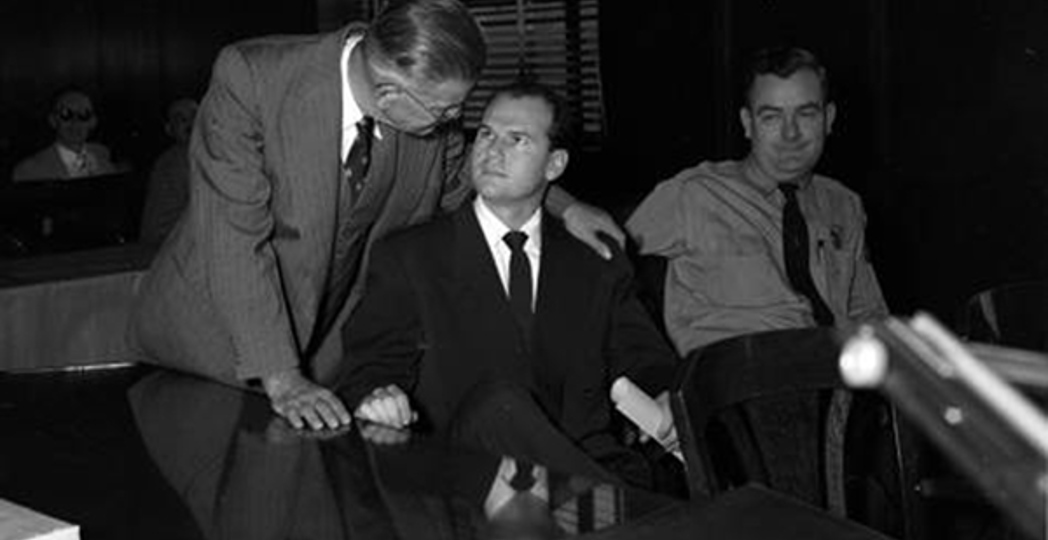CLE Myths: Sam Sheppard The Fugitive
by Vince Guerreri | Nov. 25, 2019 | 1:00 PM

Stop us if you’ve heard this one before: A doctor, accused of the heinous murder of his wife, says she was killed by another man with a distinctive physical attribute.
It’s the story that inspired the 1960s television show The Fugitive, which itself spawned a movie in 1993 and a brief reboot of the series in 2000. But it’s also the story of Sam Sheppard, a Bay Village osteopath accused of killing his wife Marilyn on July 4, 1954.
Sheppard, who said a bushy-haired intruder actually bludgeoned his pregnant wife to death, was convicted of murder later that year. But in 1961, a Chicago Tribune reporter named Paul Holmes, who had covered Sheppard’s trial, wrote a book, The Sheppard Murder Case. It rocketed to the top of the bestseller list and helped spur a young lawyer named F. Lee Bailey (yes of O.J. Simpson trial fame) to take on the appeal of Sheppard’s case, which eventually led to his retrial and acquittal.
In 1963, The Fugitive premiered. Thirty years later, before the movie’s release, the show’s creator, Roy Huggins, said in a 1993 interview with the Los Angeles Times that it had nothing to do with Sheppard.
But in that same story, Daniel Melnick, who was an executive at ABC, the network that aired the show, said “Roy’s inspiration was the Sam Sheppard case.” That sentiment was echoed by Bailey in the same 1993 story.
“There was never any doubt when Dr. Richard Kimble was running around on TV, he was inspired by the Sheppard case,” Bailey said. But it’s hard to argue with the guy who created the show.
Status: Undecided
Read More: Click here to read the full list of 30 Myths That Define Cleveland
Trending
-
1
-
2
-
3
-
4
-
5










